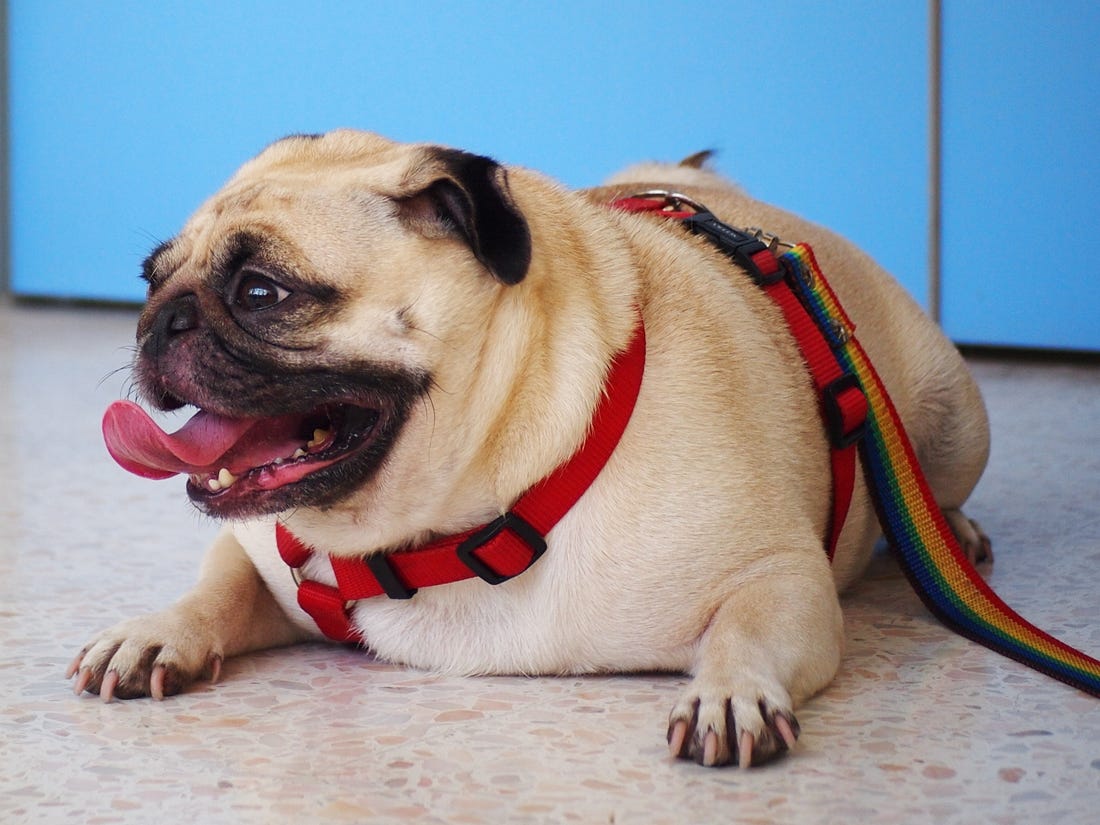Let’s face it, a slightly ‘padded’ kitty or doggo is cute. But, it usually comes with direct and indirect health risks that far outweigh any cuteness factor. In fact if a pet is overweight, the consequences may be serious.
HERE IS A SIMPLE WAY TO SEE IF YOUR PET IS OVERWEIGHT:
“The best way is to stand above pets and look down on them. You should be able to feel their ribs but not see them. If you can see them, they are too skinny.. If you can’t see their ribs, and place your hands on the side of their chest and still can’t, they’re overweight.. Both dogs and cats should also have a nice taper at their waist (between the abdomen and where the hips go into the socket). If there is very little or none at all, they are too heavy and they’ll be oval shaped. They’ll be egg shaped rather than hourglass.. And a very obese pet will have a pendulous abdomen, hip fat, and neck fat, all of which are very noticeable.” – www.petmd.com
PET OBESITY IS A SERIOUS ISSUE.
It has long been a mantra of vets, that the biggest health problem faced by pets is obesity and that more than half of their cases are overweight pets. Issues brought on by obesity are often long-term and can be life-threatening. More pet parents need to be aware of the health risks of pet obesity, and we need to manage our pet’s weight.
Here are the top health risks of overweight pets:
Shorter lifespan
Arthritis
Heart disease
Depression
Breathing problems
Hypertension (high blood pressure)
Insulin resistance
Liver problems
Low immune system
Cancer
WHAT YOU IF MY PET NEEDS TO LOSE WEIGHT?
1) FEED THEM HEALTHY FOOD
Don’t overfeed your pets. The problem usually does not lie with the animal itself, but rather with the owner. Responsible pet owners ensure that their pet gets a healthy and balanced diet, as well as sufficient exercise to burn off the calories and keep their metabolism active. Healthy pets are fed twice daily, with the correct amount of food for their size.
2) MAKE SURE YOUR PET GETS ENOUGH EXERCISE
Try giving your dog at least 30 minutes of exercise daily, and playing with kitties to increase kilojoule burn. Ideally, they should be burning MORE calories than they consume.
3) GET THEM CHECKED OUT BY A VET EVERY NOW AND THEN
Possible concerns could be Cushing’s disease or hypothyroidism when seemingly healthy animals are packing on the kilos.
Cushing’s disease is also known as hyperadrenocorticism and is characterised by the over-production of hormones from the adrenal glands. The extra high levels of these hormones in your pet’s body can cause varied and serious symptoms, including appetite increase and weight gain. Over time, if not well-controlled, Cushing’s disease can increase your pet’s risk of other conditions including diabetes, weakening of the heart and nervous system disease!
Many herbs and natural remedies can safely and effectively support your pet’s general health and help to reduce the symptoms of Cushing’s disease.
If you suspect that your pet is showing signs of an under active thyroid or notice a change in their behaviour, consult your vet for a thorough examination.

